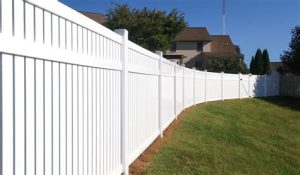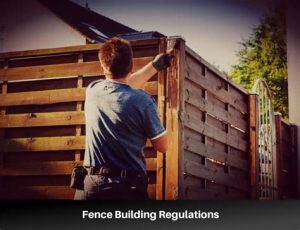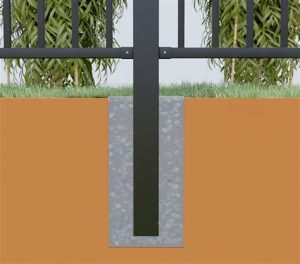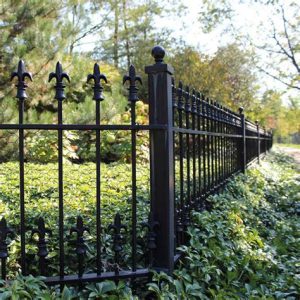Navigate local zoning laws, property boundaries, height restrictions, and building codes to secure necessary permits for your construction project.When considering the installation of a chain-link fence, one of the first questions that may arise is whether you need a permit. Fencing not only enhances the security and privacy of your property but also adds aesthetic value. However, navigating the bureaucratic landscape of local zoning regulations, property boundaries, and building codes can be daunting. Each municipality has its own set of rules that dictate what types of fences are permissible, their height, placement, and construction standards. In this blog post, we will explore the essential steps to take before embarking on your fencing project, including how to research and apply for the necessary permits. By understanding these requirements, you can ensure that your chain-link fence is compliant with local laws, allowing you to enjoy your property without any legal headaches.
Understanding local zoning regulations
When considering installing a chain-link fence, it’s essential to first understand the local zoning regulations that govern such installations. Zoning regulations can vary significantly from one municipality to another, and they dictate what you can and cannot do on your property.
Typically, these regulations may cover aspects such as fence height, material types, and the positioning of the fence relative to property lines. Some areas may have restrictions on the visibility of fences from public streets, while others may regulate the distance a fence must be set back from the property line.
To ensure you are in compliance, it is advisable to contact your local zoning office or visit their website. They can provide you with the specific zoning codes and regulations that will apply to your situation, making sure you avoid any potential legal issues or fines.
Determining property boundary requirements
When planning to install a chain-link fence, the first step is to understand the property boundary requirements. Accurately determining your property lines is crucial to avoid disputes with your neighbors and ensure compliance with local regulations. If you accidentally cross onto adjacent properties, you may face legal challenges or even be required to remove your fence.
To ascertain your property boundaries, start by reviewing your property deed which often contains a detailed description of the land. You may also contact your local assessor’s office or obtain a plat map, which visually represents the layout of your property in relation to the surrounding area. Hiring a licensed surveyor is another effective option to get precise measurements and markings.
Additionally, be aware of any easements that might affect your property. Easements are legal rights granted to others for specific use, and they could restrict where you can place your chain-link fence. Always confirm with local authorities if there are any specific regulations or requirements that pertain to your intended installation.
Researching height and placement restrictions
When considering the installation of a chain-link fence, it’s crucial to be aware of the height and placement restrictions that may apply in your locality. These restrictions can vary significantly based on local zoning regulations and can greatly impact your fencing project.
Typically, fence height regulations dictate how tall your fence can be in residential and commercial areas. For instance, many jurisdictions allow fences up to a certain height in the backyard while imposing stricter limitations for front yard fences. Generally, heights range from 3 to 6 feet, but it’s essential to check with local ordinances.
In addition to height, placement restrictions also play a vital role. Some municipalities require fences to be set back a specific distance from sidewalks, property lines, or other structures. This can affect the overall layout and positioning of your fence.
Applying for the necessary permits
When considering the installation of a chain-link fence on your property, one of the first steps you should take is to determine whether you need a permit. This process is crucial as it helps ensure that your fence complies with local regulations.
The requirements for obtaining a permit can vary widely based on your location, so it’s advisable to check with your local zoning office or city hall. They can provide you with the most up-to-date information regarding zoning regulations and any specific rules applicable to fences in your area.
Generally, the permit application will require you to submit a detailed plan of the proposed fence, including its height, materials, and exact placement on your property. It’s important to be accurate, as inaccuracies can lead to delays or even the rejection of your permit application.
- Research local zoning regulations regarding fences.
- Gather necessary documents, including property surveys.
- Complete the permit application form.
- Submit your application to the relevant authority.
- Await approval before beginning installation.
Remember, failing to obtain a necessary permit can result in fines or being required to remove or alter your fence, which can be both costly and time-consuming. Thus, taking the time to apply for the required permits is a wise step in the fence installation process.
Ensuring compliance with building codes
When installing a chain-link fence, it is crucial to ensure compliance with building codes. Building codes are a set of guidelines that dictate the minimum acceptable standards for construction and safety. These regulations are established by local authorities to promote public safety and welfare.
Before starting your fence project, check with your local building department to understand the specific requirements for chain-link fences. This will include height, material standards, and safety measures. Each jurisdiction may have different codes regarding how fences should be constructed and maintained.
Ignoring these building codes can lead to potential legal issues, including fines and mandatory removal of the fence. Always make sure to apply for any necessary permits and undergo inspections if required, ensuring that your fence is not only aesthetically pleasing but also complies with local safety standards.
Frequently Asked Questions
What is a chain-link fence?
A chain-link fence is a type of fence made from woven wire that forms a diamond pattern, providing security and visibility.
Why might someone consider installing a chain-link fence?
People often install chain-link fences for security, to contain pets and children, or to mark property boundaries.
Do you need a permit for a chain-link fence in all areas?
Permit requirements for a chain-link fence vary by location, with some municipalities requiring one while others do not.
What factors influence whether a permit is needed?
Factors may include local zoning laws, height restrictions, proximity to property lines, and whether the fence is being installed in a historic district.
How can someone find out if a permit is required for their fence?
Individuals should check their local government or city planning office’s website, or contact them directly to determine permit requirements.
What are the consequences of installing a chain-link fence without a permit?
Potential consequences include fines, the need to remove the fence, or being ordered to bring the installation into compliance.
Are there specific guidelines for the installation of chain-link fences?
Yes, guidelines may include setbacks from property lines, maximum height restrictions, and regulations regarding the materials used.





